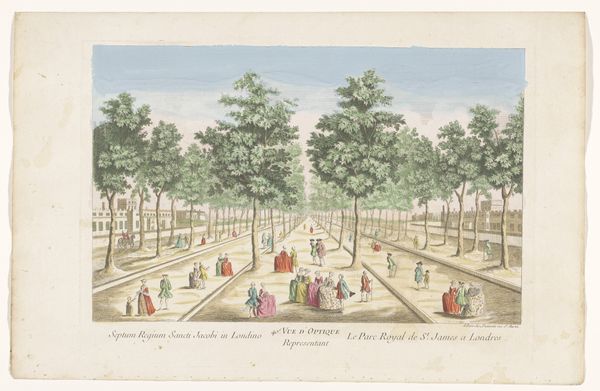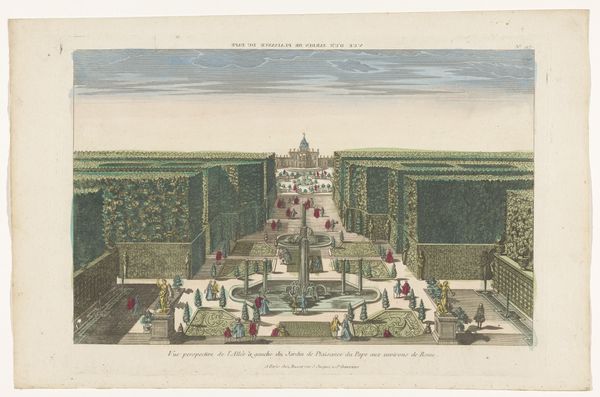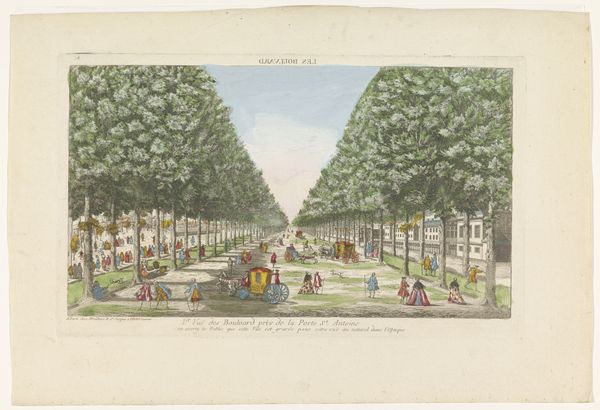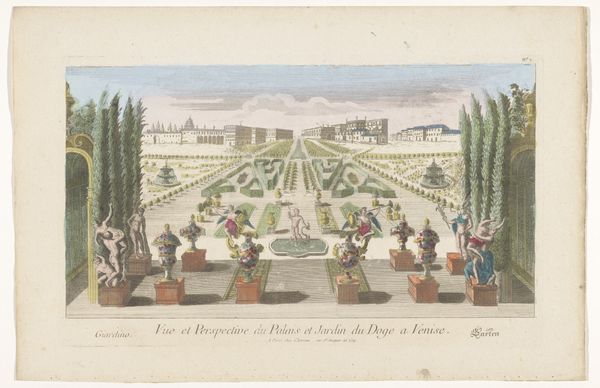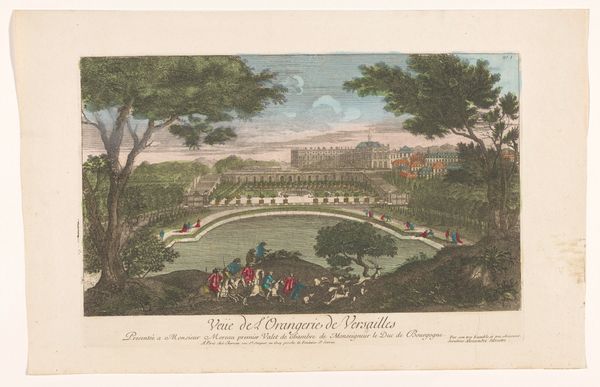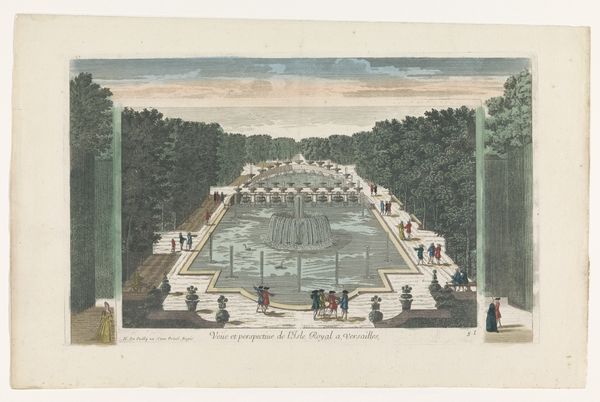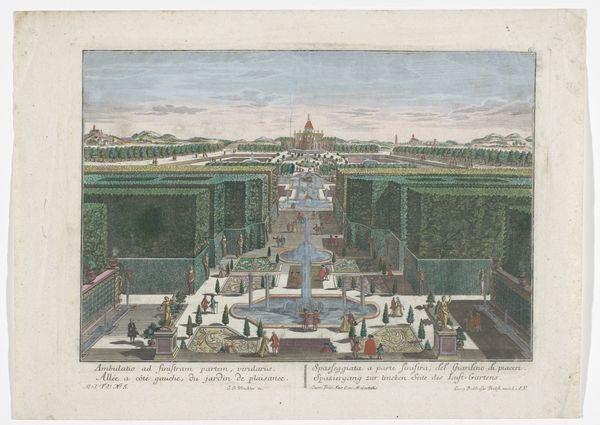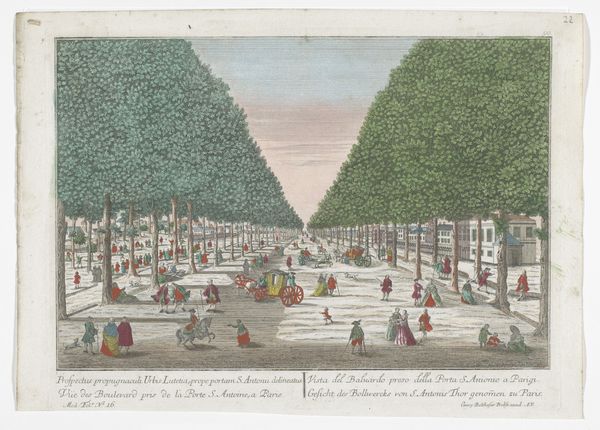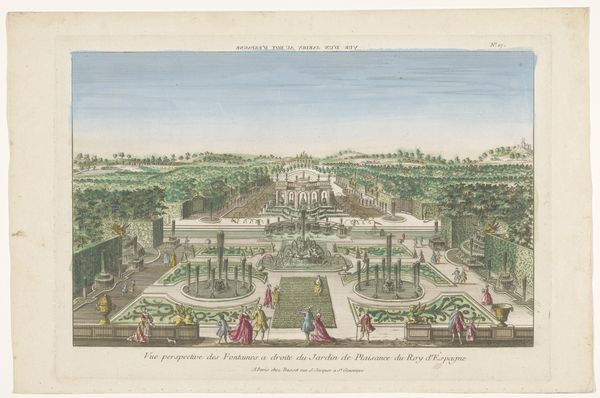
Gezicht op de Galerie d'Eau in de Tuin van Versailles 1745 - 1775
0:00
0:00
print, etching, engraving
#
garden
# print
#
etching
#
landscape
#
cityscape
#
watercolour illustration
#
history-painting
#
engraving
#
rococo
Dimensions: height 296 mm, width 439 mm
Copyright: Rijks Museum: Open Domain
Curator: Looking at this scene, my initial reaction is a sense of artificiality and staged grandeur. Editor: This is an engraving entitled "Gezicht op de Galerie d'Eau in de Tuin van Versailles," or "View of the Water Gallery in the Garden of Versailles," made sometime between 1745 and 1775. Jean-François Daumont is the artist, depicting the elaborate gardens and social life around the palace. Curator: Ah, Versailles! Of course. The extreme formal control over nature here is so evident. Look at the clipped trees, the rigid perspective – it feels almost like a stage set rather than a garden. Editor: It's a constructed space, definitely, designed to project power. Gardens were an important political tool. Royal gardens were a manifestation of a divinely ordained ruler’s dominance over nature, mirroring his or her control of the country. Curator: It's interesting to consider the social aspect too. The print shows people strolling and conversing. Were gardens a space of negotiation and display for gender roles and class distinctions? Editor: Precisely! Gardens were performative spaces, especially for women. Fashion, etiquette, power - all intertwined with the choreography of these formal walks. The aristocracy was deeply controlled, and they became both the medium and the result of political power. The Rococo style further reinforces this sense of elaborate artifice. Curator: It brings up questions about access and privilege, doesn’t it? These gardens were open to some, but absolutely forbidden to many more. Was the art style utilized in propaganda? To promote a skewed version of reality? Editor: Exactly, considering art from Versailles almost forces the viewer to explore the context of aristocracy and exclusion. Curator: Pondering how art normalizes these artificial class standards even now makes it difficult to be objective. The role of the art world in society then becomes a fascinating conversation point. Editor: Thinking about Daumont’s print through this lens, we see not just a pretty garden scene, but a document of social power structures.
Comments
No comments
Be the first to comment and join the conversation on the ultimate creative platform.


